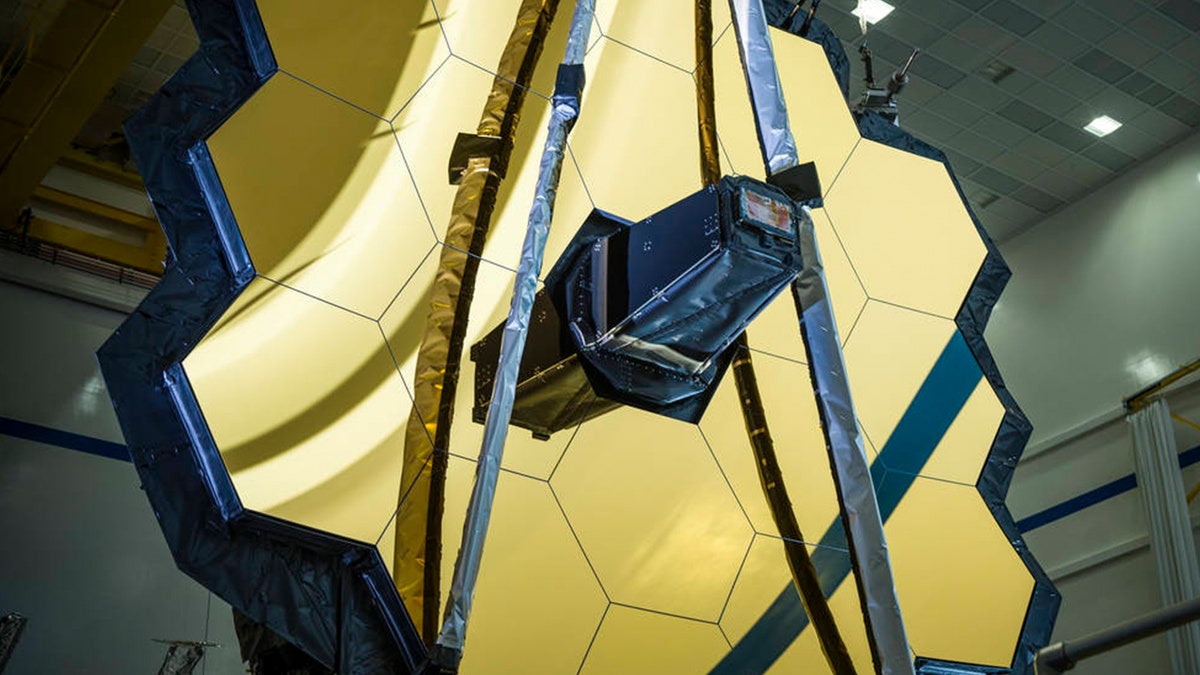Webb Space Telescope allows us to 'look into the past': Theoretical physicist
Theoretical physicist Dr. Michio Kaku explains the significance of new images provided by NASA's Webb Space Telescope on 'Sunday Night in America.'
New images from the James Webb Space Telescope are helping scientists peer back at the early universe.
In data that has not yet been peer-reviewed, astronomers said the observatory's mirror used a galaxy cluster's gravity to examine a background galaxy.
NASA that notes background galaxies can be magnified and appear multiple times in different parts of the image.
However, the European Space Agency's Dan Coe said research suggests Webb might be viewing two galaxies while observing the distant galaxy MACS0647-JD, which Coe discovered using the Hubble Space Telescope.
INTERNATIONAL SPACE STATION MOVES TO AVOID ORBITAL DEBRIS

The massive gravity of galaxy cluster MACS0647 acts as a cosmic lens (Credits: SCIENCE: NASA, ESA, CSA, STScI, and Tiger Hsiao (Johns Hopkins University) IMAGE PROCESSING: Alyssa Pagan (STScI))
"With Hubble, it was just this pale, red dot. We could tell it was really small, just a tiny galaxy in the first 400 million years of the universe," he said. "Now we look with Webb, and we’re able to resolve TWO objects! We’re actively discussing whether these are two galaxies or two clumps of stars within a galaxy. We don’t know, but these are the questions that Webb is designed to help us answer."
NASA explained that the gravity of the galaxy cluster acts as a cosmic lens to bend and magnify light from the more distant MACS0647-JD system, lensing the into three magnified images.

The James Webb Space Telescope seen on March 5, 2020. (NASA/Chris Gunn)
The image was taken from Webb’s Near Infrared Camera (NIRCam) instrument.
THE LAST SOLAR ECLIPSE OF 2022 STUNS SKYWATCHERS
Johns Hopkins University's Tiger Yu-Yang Hsiao pointed out that the colors between the two objects are different, with one appearing bluer and the other redder.

The massive gravity of galaxy cluster MACS0647 acts as a cosmic lens to bend and magnify light from the more distant MACS0647-JD system. It also triply lensed the JD system, causing its image to appear in three separate locations. (Credits: SCIENCE: NASA, ESA, CSA, STScI, and Tiger Hsiao (Johns Hopkins University) IMAGE PROCESSING: Alyssa Pagan (STScI))
The red object is older and has more dust inside, while the blue one has young star formation and nearly no dust.
"It’s really interesting that we see two structures in such a small system. We might be witnessing a galaxy merger in the very early universe. If this is the most distant merger, I will be really ecstatic!" he said.
CLICK HERE TO GET THE FOX NEWS APP
Studying the galaxies in the early universe will help to understand how they evolved, as well as how the universe has evolved.





















